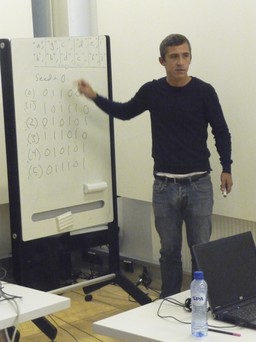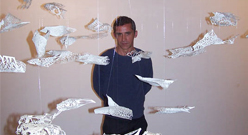-
- 16 JulKas Oosterhuis will lecture at Canadian Centre for Architecture [CCA] in Montreal, Canada
- 08 JulKas Oosterhuis will lecture at ALIVE 2013 event at the ETH Zurich (copy 1)
- 27 AprKas Oosterhuis speaker at Building Dynamics Symposium in Calgary
- 22 AprDr. -Ing. Henriette Bier lectures at the Ethiopian institute of Architecture, Building Construction and City Development
- 05 MarAlireza Mahdizadeh and Dr. Nimish Biloria publish in the International Journal of Virtual and Personal Learning Environments
- 22 Feb Hyperbody. First Decade of Interactive Architecture in The Best Dutch Book Designs 2012
- 01 FebThesis defence: "Towards a methodology for complex adaptive interactive architecture"
- 21 NovRob|Arch 2012 - Conference Robot Workshop Rotterdam @ Hyperbody’s robotics lab
- 19 NovArticle "Interactive morphologies" by Nimish Biloria published in Frontiers of Architectural Research
- 19 NovJournal article "Simply complex, toward a new kind of building" by Kas Oosterhuis in FOAR
-
-

The speaker and workshop conductor is Peter Macapia ( Adjunct Assistant Professor Pratt Institute / Sci-Arc ). Peter Macapia established DORA

- Published participants : Leander Rispens Aerium, Breta Bishop, Carlo Maria Morsiani Cave, Lieneke van Hoek, Gerben Modderman, Foteini Setaki, Matas Ubarevicius, Ferdi Zoet
Workshop brief
In the workshop Peter Macapia will show the larger scope of the combinatorial aggregate studies and their implication for architecture and design.
Playing with fire
This workshop is oriented toward a problem both simple and complex: what if we were to design not with geometry, but that which precedes geometry? What if we were to design with combinations rather than forms? What if we were to design with a given that appears nonsensical? What if we were to design blindly? In other words: what if we were to design with computation in the strict sense of that term?
This workshop is both a philosophical inquiry into the problem of computation against the background of geometry and the tradition of architecture as well as an exploration of what constitutes an architectural problem in the milieu of emerging computational techniques. We will use a couple of programs to look at and to develop aggregates out of geometrical primitives and study their results, divine their architectural potential, and organize our thoughts towards another horizon that is looming beyond the geometrical language of mathematical physics.Or, if one prefers, the participants will play with fire. The results will either lead us into new architectural understandings or it will lead us into an awareness for the demand for new architectural problems.
 Facebook/
Facebook/
 Twitter/
Twitter/
 RSS
RSS

